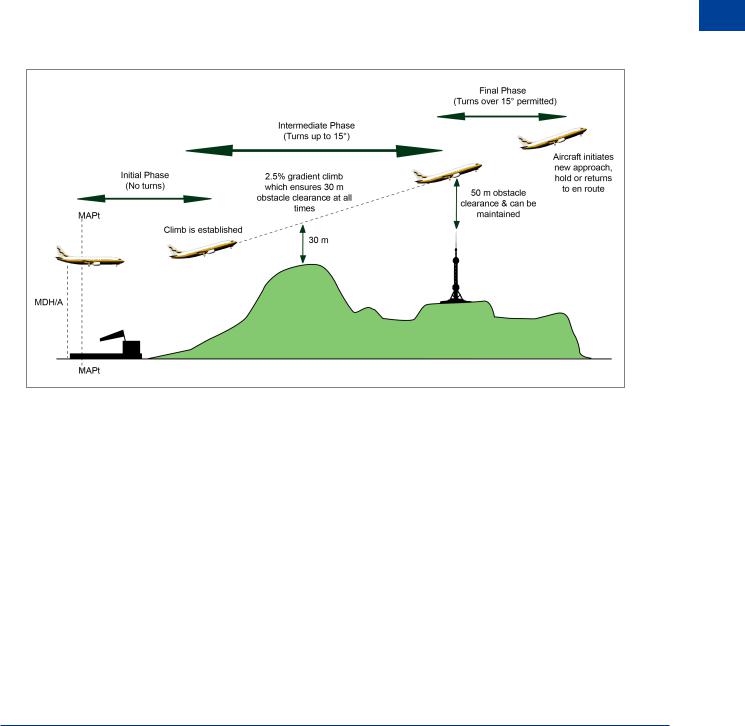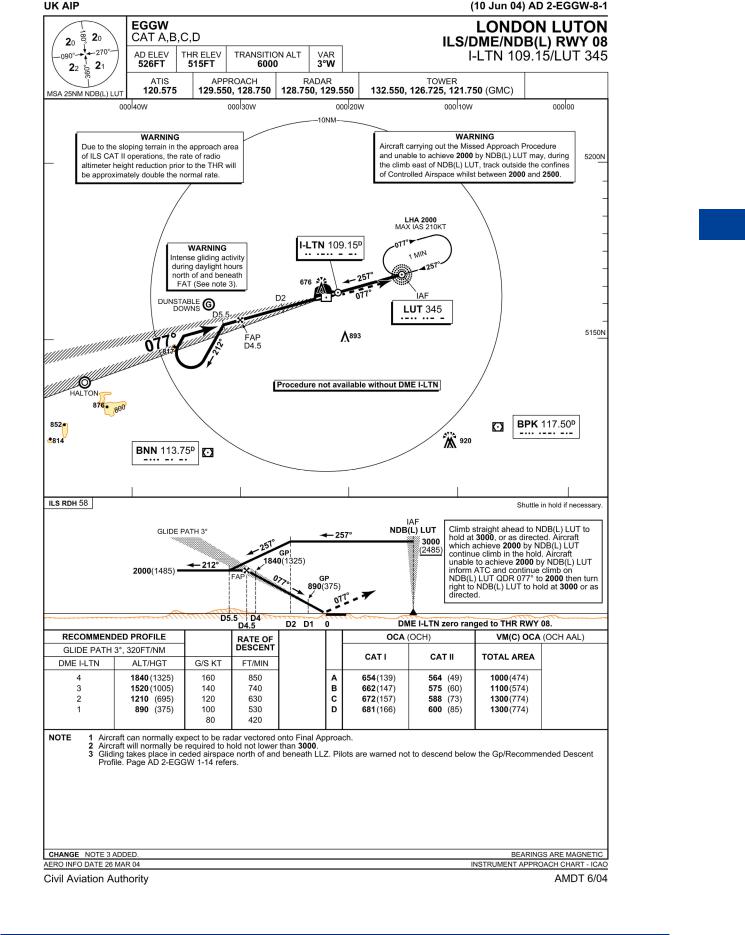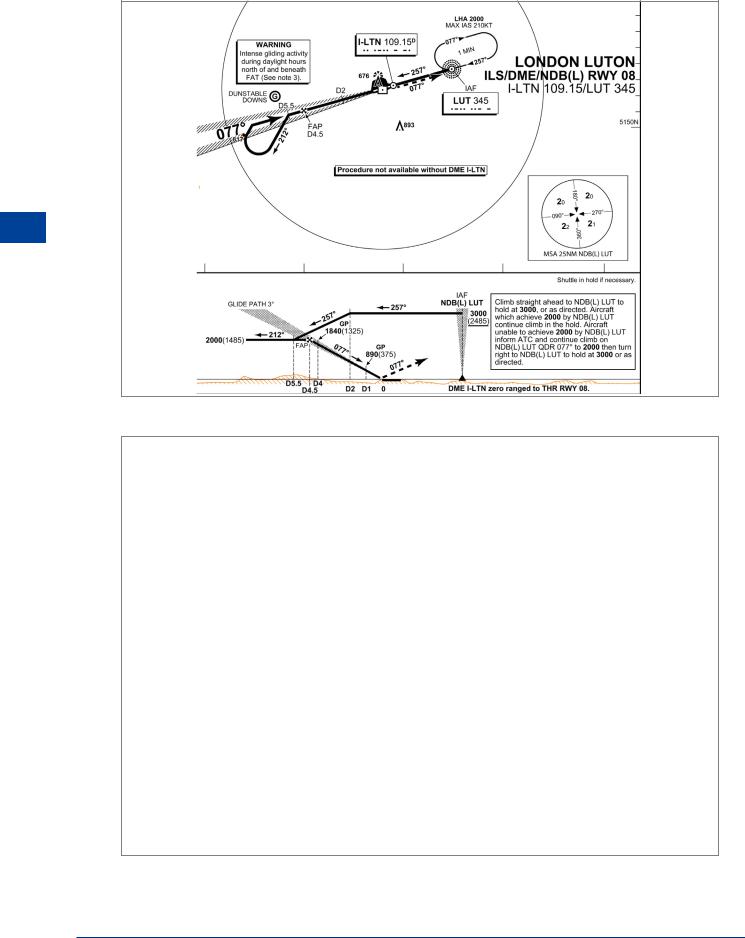
- •Textbook Series
- •Contents
- •1 Definitions
- •Introduction
- •Abbreviations
- •Definitions
- •2 International Agreements and Organizations
- •The Chicago Convention
- •International Law
- •Commercial Considerations
- •Customs and Excise, and Immigration
- •International Obligations of Contracted States
- •Duties of ICAO Member States
- •Status of Annex Components
- •The International Civil Aviation Organization (ICAO)
- •The Organization of ICAO
- •Regional Structure of ICAO
- •Regional Structure and Offices
- •ICAO Publications
- •Other International Agreements
- •The Conventions of Tokyo, the Hague and Montreal
- •The Warsaw Convention
- •The Rome Convention
- •IATA
- •ECAC
- •EASA
- •Eurocontrol
- •World Trade Organization
- •Geneva Convention
- •EU Regulation 261/2004
- •Questions
- •Answers
- •3 Airworthiness of Aircraft
- •Introduction
- •Airworthiness
- •Questions
- •Answers
- •4 Aircraft Nationality and Registration Marks
- •Introduction
- •Nationality and Registration Marks
- •Certification of Registration
- •Aircraft Markings
- •Classification of Aircraft
- •Questions
- •Answers
- •5 Flight Crew Licensing
- •Introduction
- •Definitions
- •General Rules Concerning Licensing
- •Licences and Ratings for Pilots
- •Multi-crew Pilot Licence (MPL)
- •Instrument Rating (Aeroplane) (IR(A))
- •Instructor and Examiner Rating
- •JAR-FCL 3 Medical Requirements
- •Pilot Proficiency
- •EASA Theoretical Knowledge Examinations
- •Questions
- •Answers
- •6 Rules of the Air
- •History
- •Applicability of the Rules of the Air
- •General Rules
- •Visual Flight Rules
- •Instrument Flight Rules
- •Semi-circular Flight Level Rules and RVSM
- •Special VFR
- •Distress and Urgency Signals
- •Restricted, Prohibited or Danger Areas
- •Signals for Aerodrome Traffic
- •Marshalling Signals
- •Flight Deck Signals
- •Questions
- •Answers
- •Instrument Procedures
- •PANS OPS
- •Instrument Departure Procedures
- •Questions
- •Answers
- •8 Approach Procedures
- •Procedure Basics
- •Approach Procedure Design
- •Obstacle Clearance Altitude/Height
- •Operating Minima
- •Descent Gradients
- •Track Reversal and Racetracks
- •Missed Approach Segment and Procedure
- •Published Information
- •RNAV Approach Procedures based on VOR/DME
- •Questions
- •Answers
- •9 Circling Approach
- •Circling Approach
- •Questions
- •Answers
- •10 Holding Procedures
- •Holding Procedures
- •Entry Sectors
- •ATC Considerations
- •Obstacle Clearance
- •Questions
- •Answers
- •11 Altimeter Setting Procedure
- •Altimeter Setting Objectives
- •Transition
- •Phases of Flight
- •Questions
- •Answers
- •12 Parallel or Near-parallel Runway Operation
- •Safety
- •Runway Spacing
- •Questions
- •Answers
- •13 SSR and ACAS
- •Airborne Collision Avoidance System (ACAS)
- •Questions
- •Answers
- •14 Airspace
- •Introduction
- •Control Areas and Zones
- •Classes of Airspace
- •Required Navigation Performance (RNP)
- •Airways and ATS Routes
- •Questions
- •Answers
- •15 Air Traffic Services
- •Introduction
- •Air Traffic Control
- •ATC Clearances
- •Control of Persons and Vehicles at Aerodromes
- •The Flight Information Service
- •The Alerting Service
- •Procedures
- •Questions
- •Answers
- •16 Separation
- •Concept of Separation
- •Vertical Separation
- •Horizontal Separation
- •Radar Separation
- •Procedural Wake Turbulence Separation
- •Radar Wake Turbulence Separation
- •Visual Separation in the Vicinity of Aerodromes
- •Stacking
- •Questions
- •Answers
- •17 Control of Aircraft
- •Procedural ATC
- •Radar Control
- •Radar Identification
- •Radar Service
- •Aerodrome Control
- •Approach Control Service
- •Air Traffic Advisory Service
- •Aircraft Emergencies
- •Questions
- •Answers
- •18 Aeronautical Information Service (AIS)
- •Introduction
- •General
- •The Integrated Aeronautical Information Package
- •The Aeronautical Information Publication (AIP)
- •Notices to Airmen (NOTAM)
- •SNOWTAM
- •ASHTAM
- •Aeronautical Information Circulars (AICs)
- •Pre-flight and Post-flight Information
- •Questions
- •Answers
- •Introduction
- •Aerodrome Reference Code
- •Glossary of Terms
- •Aerodrome Data
- •Runways
- •Taxiways
- •Aprons
- •Questions
- •Answers
- •Requirements
- •Visual Aids for Navigation
- •Runway Markings
- •Taxiway Markings
- •Signs
- •Markers
- •Visual Docking Guidance Systems
- •Questions
- •Answers
- •21 Aerodrome Lighting
- •Aerodrome Lights
- •Approach Lighting Systems
- •Runway Lighting
- •Taxiway Lighting
- •Questions
- •Answers
- •22 Obstacle Marking and Aerodrome Services
- •Introduction
- •Visual Aids for Denoting Obstacles
- •Visual Aids for Denoting Restricted Use Areas
- •Emergency and Other Services
- •Other Aerodrome Services
- •Questions
- •Answers
- •23 Facilitation
- •Entry and Departure of Aircraft
- •Questions
- •Answers
- •24 Search and Rescue
- •Definitions and Abbreviations
- •Establishment and Provision of SAR Service
- •Co-operation between States
- •Operating Procedures
- •Questions
- •Answers
- •25 Security
- •Introduction
- •Objectives
- •Organization
- •Preventative Security Measures
- •Management of Response to Acts of Unlawful Interference
- •Further Security Information
- •Questions
- •Answers
- •26 Aircraft Accident and Incident Investigation
- •Introduction
- •Objective of Investigation
- •Investigations
- •Serious Incidents
- •EU Considerations
- •Questions
- •Answers
- •27 Revision Questions
- •Revision Questions
- •Answers
- •EASA Specimen Examination
- •Answers to Specimen EASA Examination
- •28 Addendum – EASA Part-FCL & Part-MED
- •Chapter Five. Flight Crew Licensing
- •European Aviation Safety Agency (EASA)
- •Licences
- •Ratings
- •Certificates
- •EASA Part-MED
- •29 Index

Approach Procedures |
|
8 |
|
||
|
|
|
Missed Approach Segment and Procedure
8.47 The Procedure. If the necessary visual criteria are not obtained at decision altitude/ height (DA/H) or minimum descent altitude/height (MDA/H), or at any time during the instrument approach procedure that the pilot is unable to continue the approach, the instrument procedure requires the pilot to fly a missed approach. This procedure is always detailed on the instrument plate together with the loss of RTF procedure. The published information will always include a climb to at least MSA and as soon as the pilot elects to fly the missed approach procedure, a climb to that altitude should be initiated. If the aircraft is already at that altitude, it should be maintained. The climb gradient for the procedure is normally 2.5%. A missed approach procedure consists of three phases:
•Initial missed approach
•Intermediate missed approach
•Final missed approach
Approach Procedures 8
Figure 8.25 Three phases of the missed approach
8.48 Initiating the Procedure (The Initial Phase). The initial missed approach begins at the missed approach point (MAPt) and ends where the climb is established. The manoeuvre in this phase necessitates the attention of the pilot on establishing the climb and the changes in aeroplane configuration to get the aircraft away from the ground with increasing altitude. For this reason, guidance equipment cannot normally be fully utilized during these manoeuvres and therefore no turns are specified in this phase. The missed approach is assumed to be initiated not lower than the DA/H in a precision approach, or at a specified point in non-precision approach procedure, not lower than the MDA/H. When the MAPt is defined by reference to a navigational facility or a fix (for instance the middle marker), the distance from the FAF to the MAPt is normally published as well, and may be used for timing to the MAPt. In all cases where timing is not to be used, the procedure is to be annotated “timing not authorized for defining the MAPt”. The MAPt may be defined in a procedure as:
185

8 |
|
Approach Procedures |
|
||
|
|
|
Procedures Approach 8
•The point of intersection of the glide path with the applicable DA/H
•A navigational facility
•A fix
•A specified distance from the FAF.
8.49Navigation. If, upon reaching the MAPt, the required visual reference is not established, the procedure requires that a missed approach be initiated at once in order for protection from obstacles to be maintained. It is expected that the pilot will fly the missed approach as published. In the event that a missed approach is initiated prior to arriving at the MAPt, it is expected that the pilot will proceed to the MAPt and then follow the missed approach procedure in order to remain within the protected airspace. This does not preclude flying over the MAPt at an altitude/height higher than that required by the procedure.
8.50Intermediate Phase. This is the phase in which the climb is continued, normally straight ahead but turns up to 15° (within the straight departure criteria) are permitted. The MOC in this segment is 30 m and the segment extends to the first point where 50 m (164 ft) obstacle clearance is obtained and can be maintained. The climb gradient in this sector is 2.5% paralleling the OIS.
8.51Final Phase. The final phase begins at the point where 50 m (164 ft) obstacle clearance is first obtained and can be maintained. It extends to the point where a new approach, holding or a return to en route flight is initiated. Full turns may be prescribed in this phase.
Published Information
8.52 Terminal Approach Plates. Information concerning instrument arrivals is published on Terminal Arrival Plates (usually referred to just as ‘plates’). The plates shown here are the UK CAA plates for the London Luton self positioned ILS for runway 08. The design of the plate meets the requirement of ICAO Annex 4. Commercially produced plates are available (Jeppesen; Aerad etc…) and some operators produce their own. An ICAO plate will not show aerodrome operating minima as this is the responsibility of the operator to determine, not the state.
186

Approach Procedures |
|
8 |
|
||
|
|
|
Approach Procedures 8
Figure 8.26
187

8 |
|
Approach Procedures |
|
||
|
|
|
Procedures Approach 8
Figure 8.27
|
Obstacle Clearance |
|
OCA/H for visual |
|||
|
Altitude/Height |
|
manoeuvre (circling) |
|||
|
|
|
|
|
|
|
|
|
OCA (OCH) |
|
VM(C) OCA (OCH AAL) |
||
|
|
|
|
|
|
|
|
CAT I |
|
CAT II |
TOTAL AREA |
|
|
|
|
|
|
|
|
|
A |
654(139) |
|
564 |
(49) |
1000(474) |
|
B |
662(147) |
|
575 |
(60) |
1100(574) |
|
C |
672(157) |
|
588 |
(73) |
1300(774) |
|
D |
681(166) |
|
600 |
(85) |
1300(774) |
|
|
|
|
|
|
|
|
Note: This is not 'aid' dependent. It is an aerodrome characteristic
RECOMMENDED PROFILE |
|
RATE OF |
||
GLIDE PATH 3º. 320 FT/NM |
|
DESCENT |
||
DME I-LTN |
ALT/HGT |
G/S KT |
FT/MIN |
|
4 |
1840 |
(1325) |
160 |
850 |
3 |
1520 |
(1005) |
140 |
740 |
2 |
1210 |
(695) |
120 |
630 |
1 |
890 |
(375) |
100 |
530 |
|
|
|
80 |
420 |
Note: For information and cross reference only
Figure 8.28
188
